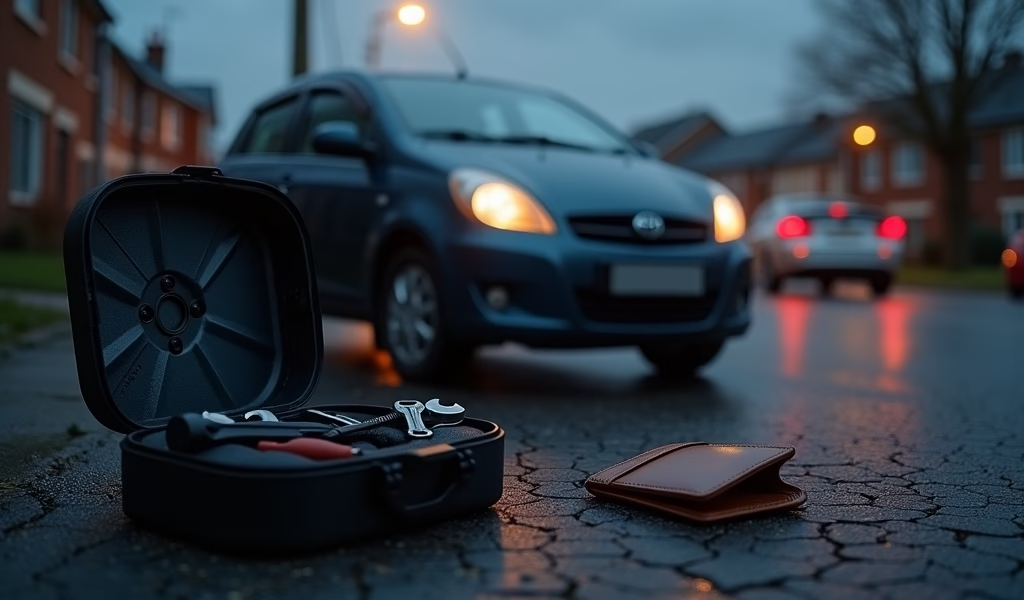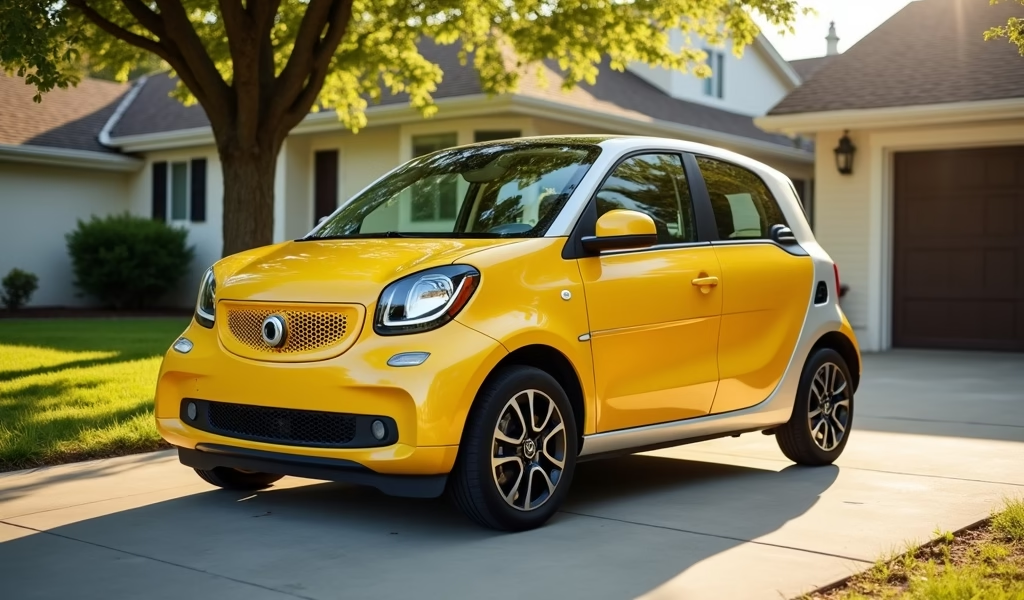Overview
This article provides practical strategies for 18-year-old drivers to reduce their typically high car insurance costs, including staying on parents’ policies, choosing safer vehicles, maintaining good grades, and utilizing telematics programs that monitor driving habits. It explains why young drivers face steep premiums due to statistical risk factors while offering specific discount opportunities and coverage recommendations to help new drivers find the best balance between adequate protection and affordability.
Table of Contents
- Understanding Car Insurance for 18-Year-Olds
- Why Is Car Insurance So Expensive for 18-Year-Olds?
- Proven Strategies to Save Money on Car Insurance
- Essential Coverage Types for New Drivers
- How to Effectively Compare Insurance Quotes
- Discounts and Programs Specifically for Young Drivers
- The Role Parents Can Play in Reducing Costs
- Common Mistakes to Avoid When Shopping for Insurance
- Conclusion: Taking Control of Your Car Insurance Journey
- Frequently Asked Questions
Understanding Car Insurance for 18-Year-Olds
Finding affordable car insurance for 18 year old drivers can feel like trying to find a needle in a haystack. Trust me, as someone who’s spent years in the automotive industry, I’ve seen countless young drivers and their parents struggle with this exact challenge. The sticker shock when you get that first quote is real—but don’t panic, there are practical ways to manage these costs.
Car insurance works differently for teens and young adults than it does for experienced drivers. Insurance companies see 18-year-olds as high-risk customers due to their limited driving experience and statistically higher accident rates. According to the Insurance Institute for Highway Safety, drivers aged 16-19 are nearly three times more likely to be in a fatal crash than drivers 20 and older.
But here’s the good news: you’re not stuck with those sky-high premiums. With some insider knowledge and strategic planning, you can find better auto insurance rates for young adults. Think of this article as your roadmap to navigating the complex world of car insurance as a newly-minted adult driver.
Why Is Car Insurance So Expensive for 18-Year-Olds?
Let’s get straight to the point: insurance for young drivers is expensive because statistics show you’re more likely to get into accidents. It’s not personal—it’s mathematical. Insurance companies live and die by risk assessment, and the data paints a clear picture.
Several factors contribute to these higher rates:
- Limited driving experience means less ability to handle unexpected road situations
- Higher likelihood of speeding and other traffic violations
- Greater tendency to be distracted while driving (especially by phones)
- More frequent engagement in risky behaviors like driving at night or with multiple passengers
Your location also plays a huge role. Urban areas typically have higher rates due to increased traffic density and higher theft rates. In some metropolitan areas, insurance for an 18-year-old can be up to 40% more expensive than in rural regions.
Gender also remains a factor in most states, with young male drivers typically paying more than their female counterparts due to statistical differences in accident rates. However, several states including California, Hawaii, Massachusetts, and Pennsylvania have banned gender-based insurance pricing.
Understanding these factors isn’t just interesting—it’s the first step toward finding ways to reduce your premiums. Now let’s look at practical strategies to bring those numbers down.

Proven Strategies to Save Money on Car Insurance
Now for the good stuff—concrete ways to slash those premium costs without sacrificing essential coverage. These aren’t just theoretical tips; they’re battle-tested strategies I’ve seen work time and again.
Choose Your Vehicle Wisely
Your car choice dramatically impacts your insurance rates. Sports cars and luxury vehicles will send your premiums through the roof. Instead, consider these vehicle characteristics that can help keep costs down:
- Four-door sedans and small SUVs typically cost less to insure than sports cars
- Vehicles with excellent safety ratings and crash test scores can qualify for discounts
- Cars equipped with anti-theft devices often receive lower premiums
- Older models generally cost less to insure than newer ones
A Honda Civic or Toyota Corolla might not turn heads like a Mustang, but the insurance savings could be substantial—sometimes up to $1,000 annually. Plus, these reliable cars will save you on maintenance costs too.
Driver’s Education Pays Off
Completing a recognized driver’s education course doesn’t just make you a safer driver—it can directly reduce your insurance costs. Many insurers offer substantial discounts (often 5-15%) for young drivers who complete these programs.
Look for courses approved by your state’s DMV or recognized by major insurance companies. Some insurers even offer their own defensive driving courses specifically designed to reduce premiums for young drivers.
Maintain Good Grades
Being a responsible student often translates to being a responsible driver in the eyes of insurance companies. The “good student discount” is one of the most significant breaks available to young drivers, sometimes reducing premiums by up to 25%.
Typically, you’ll need to maintain at least a B average (3.0 GPA) to qualify. Keep your grade reports handy when shopping for insurance—that academic dedication could save you hundreds of dollars annually.
Leverage Technology
Usage-based insurance programs like Progressive’s Snapshot or State Farm’s Drive Safe & Save use telematics devices or smartphone apps to monitor your driving habits. For careful young drivers, these programs can be a game-changer.
These programs track factors like:
- Acceleration and braking patterns
- Speed
- Time of day you drive
- Mileage
Demonstrating safe driving through these programs can lead to discounts of up to 30% for young drivers. It’s one of the few ways to prove you’re not a typical high-risk 18-year-old.
Essential Coverage Types for New Drivers
Understanding insurance terminology is crucial when you’re trying to balance coverage with cost. Let’s break down the essential types of coverage and what they actually mean for you as a young driver.
Liability Coverage: The Non-Negotiable
Liability coverage is mandatory in almost every state, and for good reason. It pays for damage you cause to others in an accident, including both property damage and bodily injury. For 18-year-olds, I strongly recommend getting more than your state’s minimum requirements.
Here’s why: minimum coverage limits can be dangerously low. If you cause a serious accident, those minimums might only cover a fraction of the damages, leaving you personally liable for the rest. A good starting point for young drivers is 100/300/100 coverage (that’s $100,000 per person for bodily injury, $300,000 per accident, and $100,000 for property damage).
Collision and Comprehensive: Worth the Extra Cost?
These optional coverages protect your vehicle—collision for accidents and comprehensive for non-collision incidents like theft, vandalism, or weather damage. For 18-year-olds, whether these make sense depends on your car’s value.
If you’re driving a newer or more valuable vehicle, these coverages are essential. For older cars worth less than $4,000, you might consider dropping them to save on premiums. Do the math: if your annual premium for these coverages exceeds 10% of your car’s value, it might not be worth it.
Uninsured/Underinsured Motorist Coverage
This often-overlooked coverage protects you when you’re hit by a driver who either has no insurance or insufficient coverage to pay for your damages. According to the Insurance Research Council, about 1 in 8 drivers on the road are uninsured.
For young drivers with tight budgets who might not have the financial cushion to cover unexpected repairs or medical bills, this coverage provides crucial protection at a relatively low additional cost.
Personal Injury Protection (PIP)
Required in no-fault insurance states, PIP covers medical expenses for you and your passengers regardless of who caused the accident. Even in states where it’s optional, PIP can be valuable for young drivers who might have limited health insurance.
This coverage typically adds $50-100 to your annual premium but can save you thousands in medical costs after an accident. For 18-year-olds with high-deductible health plans or limited coverage, this extra protection makes sense.
How to Effectively Compare Insurance Quotes
Shopping around is absolutely crucial when it comes to finding affordable car insurance for new drivers. Different insurers use different formulas to calculate risk, and rates for the exact same coverage can vary by hundreds or even thousands of dollars.
Start by gathering quotes from at least five different companies. Include both national carriers and smaller regional insurers—sometimes smaller companies specialize in high-risk drivers and offer better rates for younger motorists.
When comparing quotes, ensure you’re looking at identical coverage levels. It’s easy to think you’re getting a better deal when you’re actually comparing apples to oranges. Create a simple spreadsheet with these columns:
- Insurance company name
- Liability limits
- Deductible amounts
- Additional coverages included
- Semi-annual premium
- Available discounts
Online comparison tools can streamline this process, but don’t stop there. Call agents directly too—they can often find additional discounts that online tools miss. And don’t forget to check insurers that don’t participate in comparison sites, like State Farm and USAA.
Pay special attention to customer service ratings and claims satisfaction scores from sources like J.D. Power. The cheapest policy won’t feel like a bargain if the company is difficult to work with when you need to file a claim.

Discounts and Programs Specifically for Young Drivers
Insurance companies offer numerous discounts targeted specifically at young drivers. Taking full advantage of these programs can significantly reduce your premium costs. Here are some discounts you should actively seek out:
Distant Student Discounts
If you’re heading to college more than 100 miles from home and leaving your car behind, you could qualify for a substantial discount. Many insurers offer reductions of up to 30% for students who only drive the insured vehicle during vacations and breaks.
To qualify, you’ll typically need to provide proof of your school address and confirm that you won’t have regular access to the vehicle while at school. This discount makes particular sense for freshmen who often aren’t permitted to have cars on campus anyway.
Membership Organization Discounts
Many organizations have partnerships with insurance companies that offer discounted rates to members. Check if any of these apply to you:
- AAA membership
- Honor society memberships
- Alumni associations
- Professional organizations
- Credit union membership
Even if you’re not currently a member, sometimes the discount can offset the membership fee, making it worthwhile to join just for the insurance savings.
Safe Driver Apps and Programs
Beyond the telematics programs mentioned earlier, some insurers offer apps specifically designed for young drivers that focus on reducing distracted driving. These apps can disable texting while driving, report driving habits to parents, and reward safe behaviors with insurance discounts.
Programs like Allstate’s Drivewise, Liberty Mutual’s RightTrack, and Nationwide’s SmartRide can provide discounts of 10-30% based on your actual driving performance. For conscientious young drivers, these programs offer a path to substantially lower rates.
The Role Parents Can Play in Reducing Costs
Parents can be powerful allies in the quest for affordable insurance. From policy structure to vehicle choices, their involvement can make a significant difference in what you’ll pay.
Family Policy vs. Individual Policy
For most 18-year-olds, remaining on a parent’s policy is far more economical than getting an individual policy. Adding a teen to a family policy typically increases the premium by 50-100%, while a standalone policy for the same teen might cost 2-3 times more.
This arrangement works best when:
- You live at the same address as your parents
- Your parents have good driving records
- You’re driving a family-owned vehicle
The savings come from the family policy’s multicar discounts and the parent’s established history with the insurance company. Just make sure the primary driver of each vehicle is accurately reported to avoid issues with claims.
Co-Ownership Arrangements
Having a parent co-own your vehicle can reduce insurance costs in several ways. First, it allows you to be on their policy even if the car is primarily yours. Second, their more established credit history often results in better insurance rates.
This arrangement works particularly well when parents help finance the vehicle purchase. Just be aware that in the event of an accident, both owners may be named in any resulting lawsuit, so adequate liability coverage becomes even more important.
Working with car insurance for teens often requires a family approach, and parents who understand the system can help navigate these complex waters more effectively.
Common Mistakes to Avoid When Shopping for Insurance
Even with the best intentions, many young drivers make costly mistakes when purchasing insurance. Here are the pitfalls to avoid:
Focusing Only on Price
While budget constraints are real, choosing a policy based solely on the lowest premium can be expensive in the long run. Inadequate coverage leaves you financially vulnerable after an accident. Instead of minimum coverage, look for the best value—adequate protection at a reasonable price.
Remember that a single at-fault accident without sufficient coverage could cost you tens of thousands of dollars out of pocket, dwarfing any premium savings. Balance affordability with proper protection.
Neglecting to Update Policies
Life changes quickly at 18—you might move, change schools, buy a different car, or see your grades improve. Each of these changes could affect your insurance rates, often positively. Set calendar reminders to review your policy every six months.
Common updates that could save you money include:
- Reporting improved grades for good student discounts
- Updating your address if you move to a lower-risk area
- Adding newly completed driver education courses
- Reporting decreased mileage if your driving habits change
Missing these opportunities for adjustments could mean paying more than necessary for months or even years.
Assuming All Insurance Companies Are the Same
Different insurers have different appetites for risk and different rating factors. Some companies specialize in covering young drivers and offer significantly better rates for this age group.
Regional insurers sometimes offer more competitive rates for local young drivers compared to national brands. Companies like Erie Insurance, Auto-Owners, and Country Financial often provide excellent rates for young drivers in the states they serve, according to NerdWallet’s analysis.
Conclusion: Taking Control of Your Car Insurance Journey
Navigating car insurance for 18 year old drivers doesn’t have to be overwhelming. With the strategies we’ve covered—from choosing the right vehicle to leveraging student discounts and telematics programs—you can significantly reduce those initially shocking premiums.
Remember, insurance companies are essentially betting on your driving behavior. By demonstrating responsibility through good grades, safe driving habits, and thoughtful vehicle choices, you can gradually shift the odds in your favor and earn lower rates.
The most important step is to be proactive. Don’t simply accept the first quote you receive or assume you’re stuck with sky-high rates. Compare options thoroughly, understand exactly what coverage you’re buying, and revisit your policy regularly as your situation evolves.
As a newly minted adult driver, taking control of your insurance situation is one of the most financially impactful decisions you can make. The habits and knowledge you develop now will serve you well throughout your driving life, potentially saving you thousands of dollars in the years to come.
Frequently Asked Questions
How much does the average 18-year-old pay for car insurance?
The national average is between $4,000 and $6,000 annually for full coverage. Rates vary significantly based on location, vehicle type, and driving record.
Can I get my own insurance policy at 18 without my parents?
Yes, you can legally get your own policy at 18, but it’s typically much more expensive. Staying on a parent’s policy when possible usually offers substantial savings.
Will my rates automatically decrease when I turn 19?
Insurance rates typically begin to decrease gradually each year after 18, assuming you maintain a clean driving record. The most significant drops usually occur at ages 21 and 25.
Does having a red car really increase insurance costs?
No, this is a common myth. Insurance companies don’t factor car color into their pricing models; they care more about the make, model, and safety features.
Should I get collision insurance on an older car?
If your car is worth less than 10 times the annual premium for collision coverage, consider dropping this optional coverage. The potential payout might not justify the cost.

